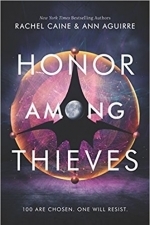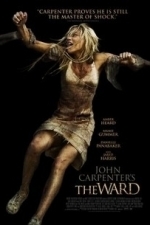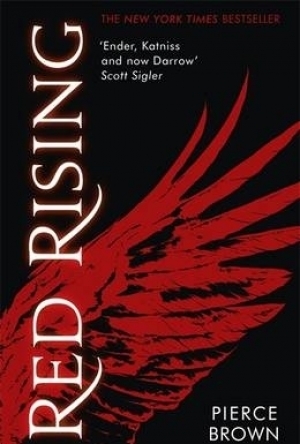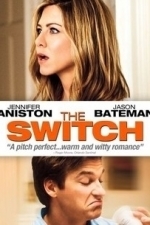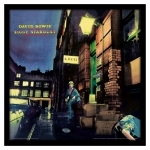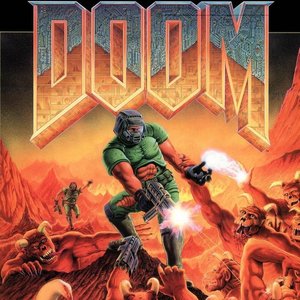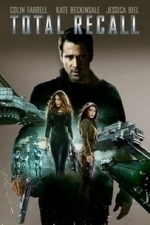Search
Search results
Gaz Coombes recommended The Man Who Sold The World by David Bowie in Music (curated)
Lyndsey Gollogly (2893 KP) rated Honor Among Thieves: The Honors Book 1 in Books
Aug 25, 2022
153 of 230
Book
Honor Among Thieves ( The Honors book 1)
By Rachel Caine and Ann Aguirre
⭐️⭐️⭐️⭐️
Petty criminal Zara Cole has a painful past that’s made her stronger than most, which is why she chose life in New Detroit instead moving with her family to Mars. In her eyes, living inside a dome isn’t much better than a prison cell.
Still, when Zara commits a crime that has her running scared, jail might be exactly where she’s headed. Instead Zara is recruited into the Honors, an elite team of humans selected by the Leviathan—a race of sentient alien ships—to explore the outer reaches of the universe as their passengers.
Zara seizes the chance to flee Earth’s dangers, but when she meets Nadim, the alien ship she’s assigned, Zara starts to feel at home for the first time. But nothing could have prepared her for the dark, ominous truths that lurk behind the alluring glitter of starlight.
This was a unique story and I really enjoyed it. I liked the concept especially with our current climate I really hope we get some mystery aliens save us from ourselves. I was hooked from the beginning the only thing that knocked me a little of track was I just seemed to lose myself in the middle not sure if that was me or the book seemed a little rushed in the middle. I absolutely love Rachel Caine and with every book I read or reread I feel sad that We will never get a new book and story from her.
Book
Honor Among Thieves ( The Honors book 1)
By Rachel Caine and Ann Aguirre
⭐️⭐️⭐️⭐️
Petty criminal Zara Cole has a painful past that’s made her stronger than most, which is why she chose life in New Detroit instead moving with her family to Mars. In her eyes, living inside a dome isn’t much better than a prison cell.
Still, when Zara commits a crime that has her running scared, jail might be exactly where she’s headed. Instead Zara is recruited into the Honors, an elite team of humans selected by the Leviathan—a race of sentient alien ships—to explore the outer reaches of the universe as their passengers.
Zara seizes the chance to flee Earth’s dangers, but when she meets Nadim, the alien ship she’s assigned, Zara starts to feel at home for the first time. But nothing could have prepared her for the dark, ominous truths that lurk behind the alluring glitter of starlight.
This was a unique story and I really enjoyed it. I liked the concept especially with our current climate I really hope we get some mystery aliens save us from ourselves. I was hooked from the beginning the only thing that knocked me a little of track was I just seemed to lose myself in the middle not sure if that was me or the book seemed a little rushed in the middle. I absolutely love Rachel Caine and with every book I read or reread I feel sad that We will never get a new book and story from her.
A Bibliophagist (113 KP) rated Suburbia in Tabletop Games
Feb 5, 2020 (Updated Feb 5, 2020)
Replayability (2 more)
Multiple strategies
Easy to play
Seems complex (1 more)
Very similar to Castles of the Madking Ludwig
More simple than it seems
I've been wanted this game for years, however after being terrible at the app versiom, I was worried it'd be too complex. However, I got it as part of BGG's secret santa and finally got around to playing it.
At first I was overwhelmed by just how many components there are, and how complex the rules were, but once I got playing and saw how it was just Castles of the Madking Ludwig and even had similarities to the house favorite Terraforming Mars, it became extremely simple. This is definitely a play to learn game, as we played it got easier and easier. My partner and I adopted different strategies and it's the first time I've seen him be such a poor loser (I did destroy him).
Unlike Castles, the players are building a town buying properties from the board (each property rejected gets cheaper each round) and creating combos that benifet the plauers end goals and the boards end goals. The players try and raise (or lower) their reputation and towns population while generating enough income for growth. It really tickled my management game itch, as I love those silly kairosoft games and played SimTower like it was noones business back in the day. Striving to not just reach my goals but create a realistic town. My partner and I found ourselves roleplaying a little, making jokes as he placed his trailer park by the city dump, or how he sectioned his wealthy side off from the unsavory side with a series of lakes. We really got into it and I look forward to playing it again! Also, I promise, it's not nearly as complex as it looks!
At first I was overwhelmed by just how many components there are, and how complex the rules were, but once I got playing and saw how it was just Castles of the Madking Ludwig and even had similarities to the house favorite Terraforming Mars, it became extremely simple. This is definitely a play to learn game, as we played it got easier and easier. My partner and I adopted different strategies and it's the first time I've seen him be such a poor loser (I did destroy him).
Unlike Castles, the players are building a town buying properties from the board (each property rejected gets cheaper each round) and creating combos that benifet the plauers end goals and the boards end goals. The players try and raise (or lower) their reputation and towns population while generating enough income for growth. It really tickled my management game itch, as I love those silly kairosoft games and played SimTower like it was noones business back in the day. Striving to not just reach my goals but create a realistic town. My partner and I found ourselves roleplaying a little, making jokes as he placed his trailer park by the city dump, or how he sectioned his wealthy side off from the unsavory side with a series of lakes. We really got into it and I look forward to playing it again! Also, I promise, it's not nearly as complex as it looks!
JT (287 KP) rated The Ward (2010) in Movies
Mar 16, 2020
Poor acting (2 more)
Laughable twist
Not scary
Carpenter must have been having an off day
his is a massive disappointment and there is no place to hide here for John Carpenter who making a return to directing since 2001′s Ghosts of Mars has delivered us a real ‘dog’ of a film.
I’m a big fan of his work, but that is his early work with the likes of Halloween and The Thing as my personal favourites, but here Carpenter’s trademark suspense is all but lost in a story that is as predictable as it is stupid.
After setting fire to a barn Kristen (Amber Heard) is sent to a mental hospital, where she is terrorised by a ghost, a hidden past his reflected upon but never fully delved into. There is of course more to it than that, and Heard spends a vast majority of the time either locked in her room or trying to escape while at the same time piecing the puzzle together with the help of some of her fellow inmates.
Carpenter’s use of the wide camera angle is effective in places, and the long cold corridors of the ward are enough to give anyone the chills. However, it is not built on in any way and all the suspense is somewhat lost by the poor acting and monotonous build-up to the next potential terrifying scene. When the ghost is revealed it is, to be honest laughable and not in the least bit frightening which is probably one of the main downfalls of the film.
The twist ending is anything but predictable and you could have spotted it a mile off, it’s a poor effort this perhaps not helped in the writing department, but Carpenter is one of the masters of horror but here he hasn’t even bothered to turn up.
I’m a big fan of his work, but that is his early work with the likes of Halloween and The Thing as my personal favourites, but here Carpenter’s trademark suspense is all but lost in a story that is as predictable as it is stupid.
After setting fire to a barn Kristen (Amber Heard) is sent to a mental hospital, where she is terrorised by a ghost, a hidden past his reflected upon but never fully delved into. There is of course more to it than that, and Heard spends a vast majority of the time either locked in her room or trying to escape while at the same time piecing the puzzle together with the help of some of her fellow inmates.
Carpenter’s use of the wide camera angle is effective in places, and the long cold corridors of the ward are enough to give anyone the chills. However, it is not built on in any way and all the suspense is somewhat lost by the poor acting and monotonous build-up to the next potential terrifying scene. When the ghost is revealed it is, to be honest laughable and not in the least bit frightening which is probably one of the main downfalls of the film.
The twist ending is anything but predictable and you could have spotted it a mile off, it’s a poor effort this perhaps not helped in the writing department, but Carpenter is one of the masters of horror but here he hasn’t even bothered to turn up.
Hazel (1853 KP) rated Red Rising in Books
May 30, 2017
Mildly boring
This eBook was provided by the publisher via NetGalley in exchange for an honest review
Red Rising by debut author Pierce Brown is a very difficult book to review. It is clear that Brown is an excellent writer with amazing ideas, but at the same time it does not feel possible to rate the book any higher that two or three stars. This first book of three is somewhat alike The Hunger Games Trilogy by Suzanne Collins and has some very exciting themes. However at other times it provoked a range of emotions from disgust to almost verging on boredom.
Set thousands of years in the future, the world has become colour coded. Gold are the elite, the ruling colour, and at the bottom of the pile are the Reds. Darrow is a Red and lives below the surface of the planet Mars in the mines with the responsibility of helping to make the planet’s surface habitable for humans in the future. He soon discovers that the ruling societies have been lying to him all his life, and to the many generations before him. But there is an uprising brewing and Darrow has been chosen to play a vital role in it, even though that means pretending to be the enemy.
Although it was difficult to get into the novel it appeared to be clear what the plot would be about. Wrong! Once Darrow has been trained to behave like a Gold the storyline changes completely. It is almost as though it is a different book altogether. Red Rising suddenly becomes Hunger Games-esque and the situations with the Reds, while being referred to once or twice, was all but forgotten. Presumably those original themes will continue within the final books of the trilogy.
Living under the surface of Mars with no sunlight speeds up the aging process of the inhabitants. People in the thirties are considered old; therefore even though Darrow is a teenager in Earth years, he is portrayed as a man – an image that is difficult to shake off throughout the entire book. Once Darrow is living with the Golds and, supposedly, resembling his true age, it is still easy to forget that he is young. This may change the way the reader pictures the scenes compared with how the author intended them to be imagined. The characters are still only children but may be mistaken for adults due Darrow’s opening scenes.
It cannot be denied that Brown is a very knowledgeable writer. As well as writing in an exceptionally well-structured way, he incorporates a vast amount of high culture into his story. A lot of the novel is influenced by Greek and Roman mythology and he also quotes famous philosophers such as Cicero and Plato. So despite its science fiction genre it also has a slight educational nature.
Something interesting about Red Rising was the character development of Darrow. At the beginning he was rather naïve, believing everything he was told, following orders etc. But soon he becomes more confident, clever, Gold-like. However he then becomes like a wild beast, killing to survive, to win. Thankfully his cleverness takes control and he realises that he needs to become a leader and not a tyrant. Towards the end he even becomes messiah-like. As Darrow progresses through these changes he becomes a more likable character.
I am not sure whether I want to read the next installment of Red Rising. For the beginning storyline to continue and become the main focus, the book would need to be completely different. This could be a good thing because, as mentioned, there were times when it was a little boring, however there’s the risk that it will not feel like a follow on from the first book. I do not want to put anyone off from reading it, but I will honestly say that it was not really what I was expecting.
Red Rising by debut author Pierce Brown is a very difficult book to review. It is clear that Brown is an excellent writer with amazing ideas, but at the same time it does not feel possible to rate the book any higher that two or three stars. This first book of three is somewhat alike The Hunger Games Trilogy by Suzanne Collins and has some very exciting themes. However at other times it provoked a range of emotions from disgust to almost verging on boredom.
Set thousands of years in the future, the world has become colour coded. Gold are the elite, the ruling colour, and at the bottom of the pile are the Reds. Darrow is a Red and lives below the surface of the planet Mars in the mines with the responsibility of helping to make the planet’s surface habitable for humans in the future. He soon discovers that the ruling societies have been lying to him all his life, and to the many generations before him. But there is an uprising brewing and Darrow has been chosen to play a vital role in it, even though that means pretending to be the enemy.
Although it was difficult to get into the novel it appeared to be clear what the plot would be about. Wrong! Once Darrow has been trained to behave like a Gold the storyline changes completely. It is almost as though it is a different book altogether. Red Rising suddenly becomes Hunger Games-esque and the situations with the Reds, while being referred to once or twice, was all but forgotten. Presumably those original themes will continue within the final books of the trilogy.
Living under the surface of Mars with no sunlight speeds up the aging process of the inhabitants. People in the thirties are considered old; therefore even though Darrow is a teenager in Earth years, he is portrayed as a man – an image that is difficult to shake off throughout the entire book. Once Darrow is living with the Golds and, supposedly, resembling his true age, it is still easy to forget that he is young. This may change the way the reader pictures the scenes compared with how the author intended them to be imagined. The characters are still only children but may be mistaken for adults due Darrow’s opening scenes.
It cannot be denied that Brown is a very knowledgeable writer. As well as writing in an exceptionally well-structured way, he incorporates a vast amount of high culture into his story. A lot of the novel is influenced by Greek and Roman mythology and he also quotes famous philosophers such as Cicero and Plato. So despite its science fiction genre it also has a slight educational nature.
Something interesting about Red Rising was the character development of Darrow. At the beginning he was rather naïve, believing everything he was told, following orders etc. But soon he becomes more confident, clever, Gold-like. However he then becomes like a wild beast, killing to survive, to win. Thankfully his cleverness takes control and he realises that he needs to become a leader and not a tyrant. Towards the end he even becomes messiah-like. As Darrow progresses through these changes he becomes a more likable character.
I am not sure whether I want to read the next installment of Red Rising. For the beginning storyline to continue and become the main focus, the book would need to be completely different. This could be a good thing because, as mentioned, there were times when it was a little boring, however there’s the risk that it will not feel like a follow on from the first book. I do not want to put anyone off from reading it, but I will honestly say that it was not really what I was expecting.
Gareth von Kallenbach (980 KP) rated The Switch (2010) in Movies
Aug 8, 2019
I had one thought when I entered the movie theater to see “The Switch”: what a hodge-podge cast. Leading lady, Jennifer Aniston (Kassie Larson), why she was once the face of 1990’s television! Jeff Goldblum (Leonard), I still think of him each time I encounter the subject of Dinosaurs. And Juliette Lewis (Debbie), she was in that Roller Derby flick, “Whip It” with the girl from Juno. How was a cast like this, enhanced by Arrested Development’s Jason Bateman, as male lead Wally Mars, going to make a film about a woman deciding to have a baby on her own?
None of the characters are perfect and the clothes are less than dazzling but the content and execution of “The Switch” is so honestly human that it manages to be subtly touching. Moreover, “The Switch” provides a new film perspective on love in New York City avoiding the overdone glitz and glamour of say “Sex and the City”.
But what is important to emphasize here is laughter. I didn’t expect to laugh as much as I did. Keep in mind there have been a number of comedic films that have attempted to touch on the subject of single women who choose to have and raise children on their own. I assumed films such as “The Back-Up Plan” and “Baby Mama” had completely covered the topic’s comedic angles, but l was wrong. This film is funny.
Still there were some scenes that could have been cut. The action could have moved at a quicker pace and it takes the first fifteen minutes of the film for the audience to connect with these imperfect characters.
However, “The Switch” is a very layered film; both human and well written while at the same time sharply funny. Moreover, this film is the much-anticipated proof that Jason Bateman does have what it takes to captivate as a lead on the big screen, so long as he has a strange son figure by his side
None of the characters are perfect and the clothes are less than dazzling but the content and execution of “The Switch” is so honestly human that it manages to be subtly touching. Moreover, “The Switch” provides a new film perspective on love in New York City avoiding the overdone glitz and glamour of say “Sex and the City”.
But what is important to emphasize here is laughter. I didn’t expect to laugh as much as I did. Keep in mind there have been a number of comedic films that have attempted to touch on the subject of single women who choose to have and raise children on their own. I assumed films such as “The Back-Up Plan” and “Baby Mama” had completely covered the topic’s comedic angles, but l was wrong. This film is funny.
Still there were some scenes that could have been cut. The action could have moved at a quicker pace and it takes the first fifteen minutes of the film for the audience to connect with these imperfect characters.
However, “The Switch” is a very layered film; both human and well written while at the same time sharply funny. Moreover, this film is the much-anticipated proof that Jason Bateman does have what it takes to captivate as a lead on the big screen, so long as he has a strange son figure by his side
Mick Hucknall recommended The Rise And Fall Of Ziggy Stardust And The Spiders From Mars by David Bowie in Music (curated)
Hazel (1853 KP) rated Red Rising in Books
Dec 7, 2018
<i>This eBook was provided by the publisher via NetGalley in exchange for an honest review</i>
<i>Red Rising</i> by debut author Pierce Brown is a very difficult book to review. It is clear that Brown is an excellent writer with amazing ideas, but at the same time it does not feel possible to rate the book any higher that two or three stars. This first book of three is somewhat alike <i>The Hunger Games Trilogy</i> by Suzanne Collins and has some very exciting themes. However at other times it provoked a range of emotions from disgust to almost verging on boredom.
Set thousands of years in the future, the world has become colour coded. Gold are the elite, the ruling colour, and at the bottom of the pile are the Reds. Darrow is a Red and lives below the surface of the planet Mars in the mines with the responsibility of helping to make the planet’s surface habitable for humans in the future. He soon discovers that the ruling societies have been lying to him all his life, and to the many generations before him. But there is an uprising brewing and Darrow has been chosen to play a vital role in it, even though that means pretending to be the enemy.
Although it was difficult to get into the novel it appeared to be clear what the plot would be about. Wrong! Once Darrow has been trained to behave like a Gold the storyline changes completely. It is almost as though it is a different book altogether. <i>Red Rising</i> suddenly becomes <i>Hunger Games-esque</i> and the situations with the Reds, while being referred to once or twice, was all but forgotten. Presumably those original themes will continue within the final books of the trilogy.
Living under the surface of Mars with no sunlight speeds up the aging process of the inhabitants. People in the thirties are considered old; therefore even though Darrow is a teenager in Earth years, he is portrayed as a man – an image that is difficult to shake off throughout the entire book. Once Darrow is living with the Golds and, supposedly, resembling his true age, it is still easy to forget that he is young. This may change the way the reader pictures the scenes compared with how the author intended them to be imagined. The characters are still only children but may be mistaken for adults due Darrow’s opening scenes.
It cannot be denied that Brown is a very knowledgeable writer. As well as writing in an exceptionally well-structured way, he incorporates a vast amount of high culture into his story. A lot of the novel is influenced by Greek and Roman mythology and he also quotes famous philosophers such as Cicero and Plato. So despite its science fiction genre it also has a slight educational nature.
Something interesting about <i>Red Rising</i> was the character development of Darrow. At the beginning he was rather naïve, believing everything he was told, following orders etc. But soon he becomes more confident, clever, Gold-like. However he then becomes like a wild beast, killing to survive, to win. Thankfully his cleverness takes control and he realizes that he needs to become a leader and not a tyrant. Towards the end he even becomes messiah-like. As Darrow progresses through these changes he becomes a more likable character.
I am not sure whether I want to read the next installment of <i>Red Rising</i>. For the beginning storyline to continue and become the main focus, the book would need to be completely different. This could be a good thing because, as mentioned, there were times when it was a little boring, however there’s the risk that it will not feel like a follow on from the first book. I do not want to put anyone off from reading it, but I will honestly say that it was not really what I was expecting.
<i>Red Rising</i> by debut author Pierce Brown is a very difficult book to review. It is clear that Brown is an excellent writer with amazing ideas, but at the same time it does not feel possible to rate the book any higher that two or three stars. This first book of three is somewhat alike <i>The Hunger Games Trilogy</i> by Suzanne Collins and has some very exciting themes. However at other times it provoked a range of emotions from disgust to almost verging on boredom.
Set thousands of years in the future, the world has become colour coded. Gold are the elite, the ruling colour, and at the bottom of the pile are the Reds. Darrow is a Red and lives below the surface of the planet Mars in the mines with the responsibility of helping to make the planet’s surface habitable for humans in the future. He soon discovers that the ruling societies have been lying to him all his life, and to the many generations before him. But there is an uprising brewing and Darrow has been chosen to play a vital role in it, even though that means pretending to be the enemy.
Although it was difficult to get into the novel it appeared to be clear what the plot would be about. Wrong! Once Darrow has been trained to behave like a Gold the storyline changes completely. It is almost as though it is a different book altogether. <i>Red Rising</i> suddenly becomes <i>Hunger Games-esque</i> and the situations with the Reds, while being referred to once or twice, was all but forgotten. Presumably those original themes will continue within the final books of the trilogy.
Living under the surface of Mars with no sunlight speeds up the aging process of the inhabitants. People in the thirties are considered old; therefore even though Darrow is a teenager in Earth years, he is portrayed as a man – an image that is difficult to shake off throughout the entire book. Once Darrow is living with the Golds and, supposedly, resembling his true age, it is still easy to forget that he is young. This may change the way the reader pictures the scenes compared with how the author intended them to be imagined. The characters are still only children but may be mistaken for adults due Darrow’s opening scenes.
It cannot be denied that Brown is a very knowledgeable writer. As well as writing in an exceptionally well-structured way, he incorporates a vast amount of high culture into his story. A lot of the novel is influenced by Greek and Roman mythology and he also quotes famous philosophers such as Cicero and Plato. So despite its science fiction genre it also has a slight educational nature.
Something interesting about <i>Red Rising</i> was the character development of Darrow. At the beginning he was rather naïve, believing everything he was told, following orders etc. But soon he becomes more confident, clever, Gold-like. However he then becomes like a wild beast, killing to survive, to win. Thankfully his cleverness takes control and he realizes that he needs to become a leader and not a tyrant. Towards the end he even becomes messiah-like. As Darrow progresses through these changes he becomes a more likable character.
I am not sure whether I want to read the next installment of <i>Red Rising</i>. For the beginning storyline to continue and become the main focus, the book would need to be completely different. This could be a good thing because, as mentioned, there were times when it was a little boring, however there’s the risk that it will not feel like a follow on from the first book. I do not want to put anyone off from reading it, but I will honestly say that it was not really what I was expecting.
Matthew Krueger (10051 KP) rated the Xbox 360 version of Doom in Video Games
Mar 20, 2020
Kick Some Ass
Doom- such a classic to all, I personally didnt play doom until the 360. Yes you read that right, i didnt play this game until the 360. So lets talk about it.
The gameplay:
Doom is a first-person shooter presented with early 3D graphics. The player controls an unnamed space marine—later termed the Doomguy—through a series of levels set in military bases on the moons of Mars and in Hell. To finish a level, the player must traverse through the area to reach a marked exit room. Levels are grouped together into named episodes, with the final level focusing on a boss fight with a particularly difficult enemy.
While traversing the levels, the player must fight a variety of enemies, including demons and possessed undead humans, while managing supplies of ammunition, health, and armor. Enemies often appear in large groups, and the game features five difficulty levels which increase the quantity and damage done by enemies, with enemies respawning upon death and moving faster than normal on the hardest difficulty setting.
Levels can also include pits of toxic waste, ceilings that lower and crush anything below them, and locked doors which require a keycard, skull-shaped key device, or a remote switch to be opened.
The plot:
Doom is divided into three episodes: "Knee-Deep in the Dead", "The Shores of Hell", and "Inferno". A fourth episode, "Thy Flesh Consumed", was added in an expanded version of the game, The Ultimate Doom. The game itself contains very few plot elements, with the minimal story instead given in the instruction manual and short text segues between episodes.
In the future, the player character (an unnamed space marine) has been punitively posted to Mars after assaulting a superior officer, who ordered his unit to fire on civilians. Players assume the role of a space marine, popularly known as "Doomguy", fighting his way through hordes of invading demons from Hell.
The Impact/Legacy:
Doom helped define the FPS genre and inspired numerous similar games, known as "Doom clones". It is one of the most significant games in video game history, and is frequently cited as one of the greatest games of all time. It pioneered online distribution and technologies including 3D graphics, networked multiplayer gaming, and support for customized modifications via packaged files (WADs). However, its graphic violence and hellish imagery also made it a subject of controversy.
Doom was influential and dozens of new first-person shooter titles appeared following Doom's release, and they were often referred to as "Doom clones" rather than "first-person shooters". The term "Doom clone" was used to describe the style of gameplay in Doom-style games. While the term was initially popular, it was, after 1996, gradually replaced by "first-person shooter", and the phrase "first-person shooter" had firmly superseded "Doom clone" around 1998. Some of these were certainly "clones", hastily assembled and quickly forgotten, while others explored new grounds of the genre and were highly acclaimed. Many of the games closely imitated features in Doom such as the selection of weapons and cheat codes.
Devoted players have spent years creating speedruns for Doom, competing for the quickest completion times and sharing knowledge about routes through the levels and how to exploit bugs in the Doom engine for shortcuts. Achievements include the completion of both Doom and Doom II on the "Ultra-Violence" difficulty setting in less than 30 minutes each. In addition, a few players have also managed to complete Doom II in a single run on the difficulty setting "Nightmare!", on which monsters are more aggressive, launch faster projectiles (or, in the case of the Pinky Demon, simply move faster), and respawn roughly 30 seconds after they have been killed (level designer John Romero characterized the idea of such a run as "[just having to be] impossible").
So overall Doom is a epic game, and started the first person shooter genre, started speedrunning and started the franchise as we know today. So thank you id software and John Ramero for this game.
The gameplay:
Doom is a first-person shooter presented with early 3D graphics. The player controls an unnamed space marine—later termed the Doomguy—through a series of levels set in military bases on the moons of Mars and in Hell. To finish a level, the player must traverse through the area to reach a marked exit room. Levels are grouped together into named episodes, with the final level focusing on a boss fight with a particularly difficult enemy.
While traversing the levels, the player must fight a variety of enemies, including demons and possessed undead humans, while managing supplies of ammunition, health, and armor. Enemies often appear in large groups, and the game features five difficulty levels which increase the quantity and damage done by enemies, with enemies respawning upon death and moving faster than normal on the hardest difficulty setting.
Levels can also include pits of toxic waste, ceilings that lower and crush anything below them, and locked doors which require a keycard, skull-shaped key device, or a remote switch to be opened.
The plot:
Doom is divided into three episodes: "Knee-Deep in the Dead", "The Shores of Hell", and "Inferno". A fourth episode, "Thy Flesh Consumed", was added in an expanded version of the game, The Ultimate Doom. The game itself contains very few plot elements, with the minimal story instead given in the instruction manual and short text segues between episodes.
In the future, the player character (an unnamed space marine) has been punitively posted to Mars after assaulting a superior officer, who ordered his unit to fire on civilians. Players assume the role of a space marine, popularly known as "Doomguy", fighting his way through hordes of invading demons from Hell.
The Impact/Legacy:
Doom helped define the FPS genre and inspired numerous similar games, known as "Doom clones". It is one of the most significant games in video game history, and is frequently cited as one of the greatest games of all time. It pioneered online distribution and technologies including 3D graphics, networked multiplayer gaming, and support for customized modifications via packaged files (WADs). However, its graphic violence and hellish imagery also made it a subject of controversy.
Doom was influential and dozens of new first-person shooter titles appeared following Doom's release, and they were often referred to as "Doom clones" rather than "first-person shooters". The term "Doom clone" was used to describe the style of gameplay in Doom-style games. While the term was initially popular, it was, after 1996, gradually replaced by "first-person shooter", and the phrase "first-person shooter" had firmly superseded "Doom clone" around 1998. Some of these were certainly "clones", hastily assembled and quickly forgotten, while others explored new grounds of the genre and were highly acclaimed. Many of the games closely imitated features in Doom such as the selection of weapons and cheat codes.
Devoted players have spent years creating speedruns for Doom, competing for the quickest completion times and sharing knowledge about routes through the levels and how to exploit bugs in the Doom engine for shortcuts. Achievements include the completion of both Doom and Doom II on the "Ultra-Violence" difficulty setting in less than 30 minutes each. In addition, a few players have also managed to complete Doom II in a single run on the difficulty setting "Nightmare!", on which monsters are more aggressive, launch faster projectiles (or, in the case of the Pinky Demon, simply move faster), and respawn roughly 30 seconds after they have been killed (level designer John Romero characterized the idea of such a run as "[just having to be] impossible").
So overall Doom is a epic game, and started the first person shooter genre, started speedrunning and started the franchise as we know today. So thank you id software and John Ramero for this game.
Gareth von Kallenbach (980 KP) rated Total Recall (2012) in Movies
Aug 7, 2019
Remaking classic films is always risky business. Mainly because there is a specific reason those movies are so well received – because they are the best of their time. Remakes are inherently risky because the filmmakers have a bar they have to at least reach, and they absolutely cannot tread the exact same ground as the original. They have to do something new, modern, or innovate. Or, at least they are expected to. When remakes work, they soar. When they don’t… Well, that’s another story. Paul Verhoeven’s “Total Recall” (1990) was an excellent science fiction monolith of its time. It stood out as a heartfelt science fiction story, one that was exceptionally aware of its own identity, design, and overall setting. It reflected the vary soul of its time – intentionally representational of culture at the time (late 80s and early 90s). If Len Wiseman’s remake, “Total Recall” (2012) is supposed to be a representation of contemporary culture in the same way as the original, then I fear our popular culture is too shallow for high minded science fiction. While not a bad movie – in fact, it is actually quite entertaining overall – it just does not feature the same soul and passion of the original film.
The premise follows the original in only a rough sense. Sometime in the future, the world has been left mostly uninhabitable due to a deadly chemical war across the globe. Humanity has been left to residing in the only remaining habitable landmasses – Western Europe and “The Colony”, the latter being modern-day Australia. Because air travel is now impossible, the only travel between the landmasses is through a massive elevator called “The Fall” that cuts through the center of the Earth. Douglas Quaid (Colin Farrell) is a factory worker who works in Europe but lives in “The Colony” with his wife, Lori (Kate Beckinstale). His chronic nightmares lead him to become interested in the “Rekall” service – a machine that can implant memories into customers. His interest will lead him on a wild journey with Melina (Jessica Biel) to learn about his true self as well as secrets of Cohaagen’s (Bryan Cranston) tyrannical administration.
The problems of the film really start with the premise. While I enjoy the creativity of something like “The Fall”, it is simply too ridiculous to take seriously. They deserve credit for coming up with a relatively unknown science fiction concept, but an elevator that travels through the center of the Earth? Peoples’ suspension of disbelief can only be pushed so far. It serves a practical purpose in the plot – to create the conflict between “The Colony” and the mainland and between the government and the Resistance. Yet, too much time is spent trying to introduce this concept and make it seem plausible than the film should. It honestly seems easier to just use the original film’s conflict between settings – Mars and Earth. I have to ask, what makes an elevator between two lands more contemporary of an idea than a conflict between colonial Mars and Earth. This is especially true considering recent news that a Mars colony might be seen in our lifetimes.
The other problems are more literary. Colin Farrell’s Douglas Quaid is portrayed very well throughout the film, and he manages to make the character satisfactory in the emotional portrayal of a man with a confused past and an insane situation. But even then, I have to say Arnold’s original portrayal seemed overall more human. The problem with Colin Farrell’s character is a mixture of performance and writing in his introduction. It is hard to believe him as someone so distraught over his nightmares that he absolutely feels compelled to go to Rekall. If they spent more time exploring his inner demons and how they are bringing his life down, then he would have been a much more compelling character. As it stands, he just goes through the motions of a protagonist. All of the other characters are the same way. Kate Beckinstale’s villainous Lori and Jessica Biel’s Melina are fairly shallow characters. They are not bad at their roles but that is all they, unfortunately, are: roles. Like Quaid, they just go through the motions, playing their part as clichéd character archetypes. Bryan Cranston is always awesome in any role, but in this he is not given much to work with. All he ends up being is just an evil tyrant with a megalomaniacal plot – with very little reason or background.
Those issues said, there are many things that do work. The pacing is good throughout, with no moments feeling awkward. The art design is exceptional, and there are no moments in the film that are boring to look at. To its credit, almost every scene is full of beautiful science-fiction design. The only complaint in this area is that some of the action scenes feel very cluttered due to the overall noise of The Colony’s design. The plot moves forward steadily, and it is overall simple to understand. That said, it is not without its own faults. The plot starts out great but becomes full of usual secret agent thriller clichés. Also, the plot becomes very campy, not to mention unbelievable, in its third act. The third act is also where there are the most plot holes – notable plot holes at that.
If you can shut your brain off for a couple hours, you can enjoy “Total Recall”. The film is pretty to look at and is absolutely packed with action sequences. All of the action sequences are well shot, well paced, and entertaining. The actors all do great with what they are given; but the problem is that they are not given much. They are all fairly flat characters, but are all satisfactory for the service of the plot – a plot that is well paced and understandable, but one that becomes campy, ridiculous, and peppered with notable plot holes. It is not as tightly written and directed to be a great secret agent thriller, and not as inspired to be a great science fiction story. The original was exceptional in its setting construction – pulling the audience into the amazingly designed Paul Verhoeven world. It was full of comedy and thrills, thought and design. As it stands, the moments that could really go far in establishing a passionate soul-filled, inspired world are instead spent on making quick references to those vary moments from the original. It could have established its own voice, its own heart and soul, but it just settles on being your clichéd average science fiction blockbuster.
The premise follows the original in only a rough sense. Sometime in the future, the world has been left mostly uninhabitable due to a deadly chemical war across the globe. Humanity has been left to residing in the only remaining habitable landmasses – Western Europe and “The Colony”, the latter being modern-day Australia. Because air travel is now impossible, the only travel between the landmasses is through a massive elevator called “The Fall” that cuts through the center of the Earth. Douglas Quaid (Colin Farrell) is a factory worker who works in Europe but lives in “The Colony” with his wife, Lori (Kate Beckinstale). His chronic nightmares lead him to become interested in the “Rekall” service – a machine that can implant memories into customers. His interest will lead him on a wild journey with Melina (Jessica Biel) to learn about his true self as well as secrets of Cohaagen’s (Bryan Cranston) tyrannical administration.
The problems of the film really start with the premise. While I enjoy the creativity of something like “The Fall”, it is simply too ridiculous to take seriously. They deserve credit for coming up with a relatively unknown science fiction concept, but an elevator that travels through the center of the Earth? Peoples’ suspension of disbelief can only be pushed so far. It serves a practical purpose in the plot – to create the conflict between “The Colony” and the mainland and between the government and the Resistance. Yet, too much time is spent trying to introduce this concept and make it seem plausible than the film should. It honestly seems easier to just use the original film’s conflict between settings – Mars and Earth. I have to ask, what makes an elevator between two lands more contemporary of an idea than a conflict between colonial Mars and Earth. This is especially true considering recent news that a Mars colony might be seen in our lifetimes.
The other problems are more literary. Colin Farrell’s Douglas Quaid is portrayed very well throughout the film, and he manages to make the character satisfactory in the emotional portrayal of a man with a confused past and an insane situation. But even then, I have to say Arnold’s original portrayal seemed overall more human. The problem with Colin Farrell’s character is a mixture of performance and writing in his introduction. It is hard to believe him as someone so distraught over his nightmares that he absolutely feels compelled to go to Rekall. If they spent more time exploring his inner demons and how they are bringing his life down, then he would have been a much more compelling character. As it stands, he just goes through the motions of a protagonist. All of the other characters are the same way. Kate Beckinstale’s villainous Lori and Jessica Biel’s Melina are fairly shallow characters. They are not bad at their roles but that is all they, unfortunately, are: roles. Like Quaid, they just go through the motions, playing their part as clichéd character archetypes. Bryan Cranston is always awesome in any role, but in this he is not given much to work with. All he ends up being is just an evil tyrant with a megalomaniacal plot – with very little reason or background.
Those issues said, there are many things that do work. The pacing is good throughout, with no moments feeling awkward. The art design is exceptional, and there are no moments in the film that are boring to look at. To its credit, almost every scene is full of beautiful science-fiction design. The only complaint in this area is that some of the action scenes feel very cluttered due to the overall noise of The Colony’s design. The plot moves forward steadily, and it is overall simple to understand. That said, it is not without its own faults. The plot starts out great but becomes full of usual secret agent thriller clichés. Also, the plot becomes very campy, not to mention unbelievable, in its third act. The third act is also where there are the most plot holes – notable plot holes at that.
If you can shut your brain off for a couple hours, you can enjoy “Total Recall”. The film is pretty to look at and is absolutely packed with action sequences. All of the action sequences are well shot, well paced, and entertaining. The actors all do great with what they are given; but the problem is that they are not given much. They are all fairly flat characters, but are all satisfactory for the service of the plot – a plot that is well paced and understandable, but one that becomes campy, ridiculous, and peppered with notable plot holes. It is not as tightly written and directed to be a great secret agent thriller, and not as inspired to be a great science fiction story. The original was exceptional in its setting construction – pulling the audience into the amazingly designed Paul Verhoeven world. It was full of comedy and thrills, thought and design. As it stands, the moments that could really go far in establishing a passionate soul-filled, inspired world are instead spent on making quick references to those vary moments from the original. It could have established its own voice, its own heart and soul, but it just settles on being your clichéd average science fiction blockbuster.

